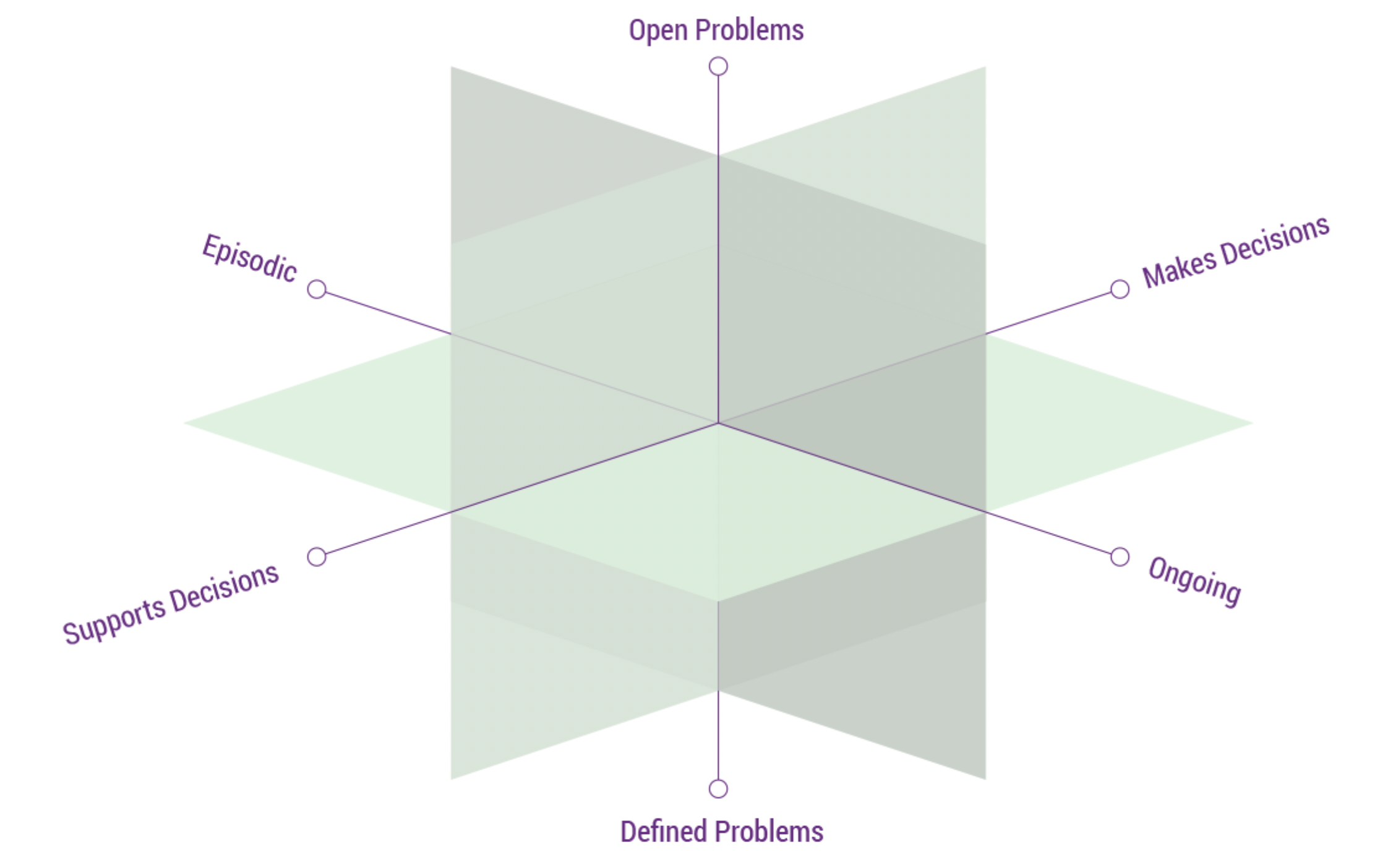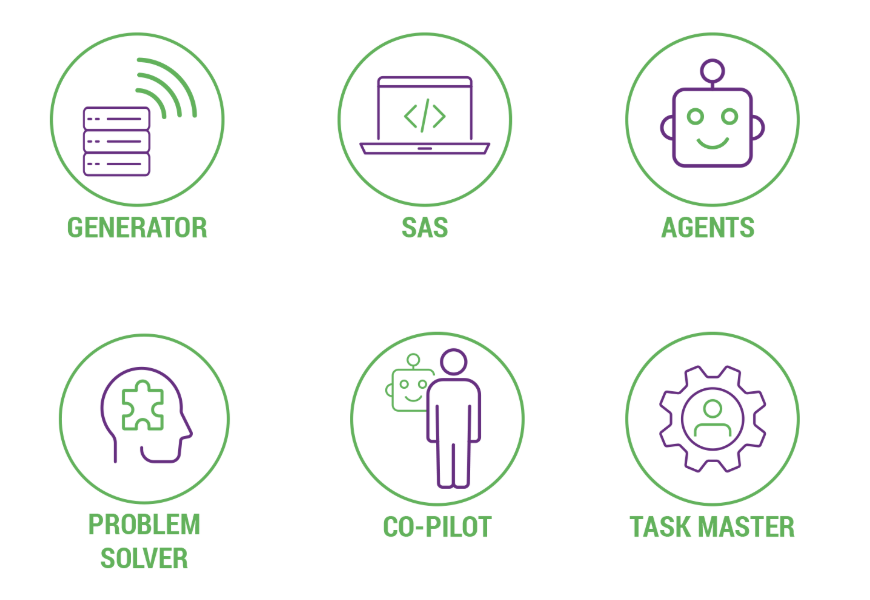Three dimensions for generative AI apps and implications for value and pricing
Steven Forth is CEO of Ibbaka. Connect on LinkedIn
AI is reconfiguring the B2B SaaS application space. Existing applications are being replaced by a variety of agents, agent clouds or families, co-pilots, virtual workers, Service as Software… this is starting to get bewildering.
In this post we propose three dimensions that can be used to organize this rapidly changing space and then see if we can derive some general principles for value modeling and pricing design.
One part of this work is to understand value, packaging , pricing and billing of agents. Ibbaka is working with Maxio to research and help define this field.
Take the Maxio Ibbaka Survey on the Value, Monetization and Billing of Agentic AI
Three key axes for the business AI space are as follows:
Use is episodic (one does not use the AI all the time but in response to a need) or ongoing (the AI is always on and working)
The AI is supporting human decision making but does not actually make decisions itself - supports decisions or there is a degree of autonomy - makes decisions (even though there may still be a human in the loop providing guidance and approving decisions)
Some AIs are designed to support well defined work processes and automate what is known, they work with defined problems, others are used to explore open problems that are not well defined. Today’s generative AIs are actually able to help with both.
The Ibbaka design space for Business AI
Where one chooses to play in this space will define the problems one can solve, solution architectures, how value is created and how to price. The three axes define eight quadrants where B2B software vendors can focus their efforts.
There are emerging patterns for applications in six quadrants of the eight quadrants. That leaves two quadrants to be filled and it will be interesting to see what emerges. The open quadrants are for decision making for open problems (whether episodic or ongoing). This may rely on the eventual? emergence of more general forms of AI. The current generation of AI and those on the current trajectory are not suited for final decision making on open problems although there are approaches like concept blending and scenario planning where generative AI can help.
The six emerging patterns are given below.
Six Packaging Patterns for Business AI
Generator: This is the original use pattern for generative AI. The AI is given a prompt or series of prompts, suns them against one or more foundation models (possibly combining different types)
Co-Pilot: A co-pilot travels along with you as you work providing advice and help as you go along. Co-pilots are generally designed to support a specific application or application suite.
Agents: Agents complete a well defined task. They are autonomous or quasi autonomous. The task and completion criteria are well defined. Agents can be deployed as families or in flocks where one agent passes the product of its work to another agent. In this ways a system of agents can take on complex business process or workflows and support Service as Software.
Service as Software: In this pattern all of the other patterns come together to cover a complete business process. In many cases this will require more than just a chain of agents doing pieces of the work. Many services combine both closed and open problems making it difficult to run them just with agents and ensuring that at least for now humans will be in the loop.
Task Master: A task master is similar to an agent but without the decision making authority. Unlike a co-pilot it does not travel along with another application but stands independent of specific software applications.
Problem Solver: This is the most powerful use of generative AI and the one that comes closest to what most people think of as ‘intelligence.’ It could also be called an idea generator or solution explorer. It is used to explore the dimensions of a problem, get a feeling for the interactions and boundary conditions, and then to propose and explore alternative solutions. It is generally used for open problems that do not have an obvious solution.
Pattern → Value → Price
Each of these patterns has implications for value modeling and pricing design. The following table is a summary. It is interesting to note that the only patterns that are likely to use conventional per user pricing are Co-Pilots (where the pricing is often tied to the underlying application that is being supported, which is most often per user) and the Problem Solver, which is one of the main ways the reasoning models will be used directly.
Other patterns are gravitating to pricing metrics that are processing, task or outcome based.
Table of AI packaging patterns Value and Pircing
There has been a lot of talk of outcome based pricing in AI but in fact only two of these six patterns are really candidates for this. These are those where the AI actually makes a decision: Agents and SaS (Service as Software). It is solutions using these two patterns that are most likely to meet the three requirements for outcome based pricing:
Defined outcome (in other words, closed problems)
Attribution (simple solutions and outcomes for Agents, more complex outcomes for SaS)
Predictability
This is still a very fluid space. The patterns may change, other axes may emerge to replace or complement the three identified here. Evolution tends to create new niches. Expect many different niches to evolve as B2B AI transforms how we work and create value.





